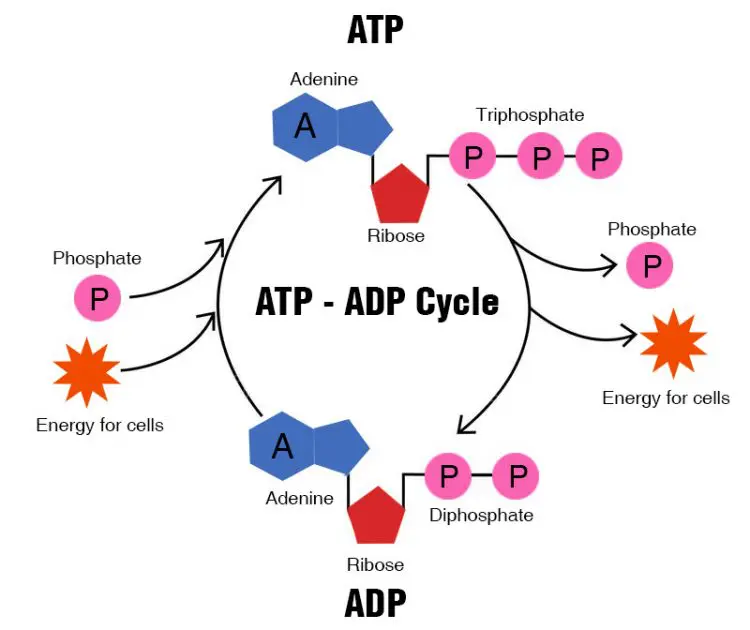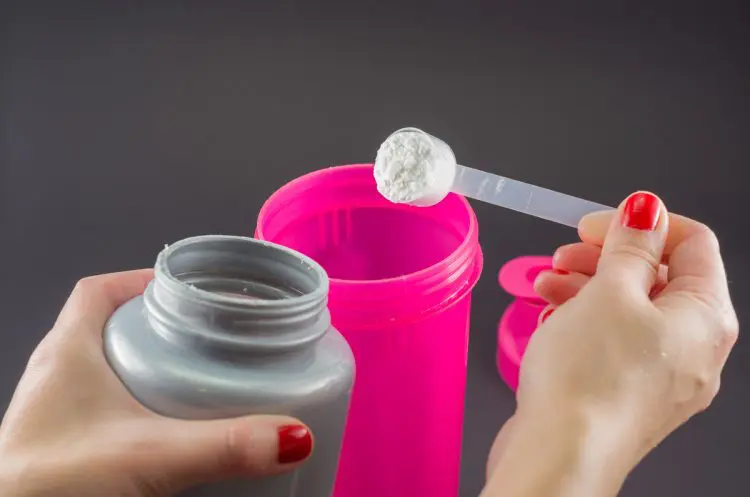Performance-enhancing supplements are nothing new. For almost as long as people have been competing against each other on the sports field and the battlefield, they have been looking for ways to gain an edge over their opponents.
In ancient Rome and Greece, it was common practice for men to eat bull’s testicles in an effort to increase stamina and strength. This was based on the fact that a castrated bull didn’t grow as big or as strong as those that remained intact. Ergo, the animal’s testes were responsible for its strength, and eating them ought to do the same thing for the person consuming them.
The marauding Vikings of old consumed the herb bog myrtle which, it seems, increased aggressiveness and suppressed fear. The most ferocious warriors were called berserkers, which is where the modern term going berserk comes from – meaning out of control with anger or excitement. Bog myrtle was the original pre-workout supplement.
Things have changed over the passing centuries, and performance-enhancing supplements are now much more widely available. While some supplements are distinctly faddy and arguably worthless, a few have been heavily researched and proven to be effective.
One such supplement is creatine.
In this article, we reveal the benefits of using creatine and how to use it for the best results.
Level Up Your Fitness: Join our 💪 strong community in Fitness Volt Newsletter. Get daily inspiration, expert-backed workouts, nutrition tips, the latest in strength sports, and the support you need to reach your goals. Subscribe for free!
What is Creatine?

Creatine is one of the most best-selling sports supplements around. It really doesn’t matter what you are training for; creatine will probably help. It’s safe, cheap, and produces excellent results for most people who use it.
But what is creatine?
Creatine is a naturally occurring substance made from two amino acids – glycine and arginine. It’s present in meat and fish, and your body makes it too. It can also be obtained by taking a creatine supplement. Using a creatine supplement means you can fill your muscles with more creatine and increasing creatine levels in your body can be very beneficial.
Your body uses fat, carbohydrate, and even sometimes protein for energy. However, your body takes these so-called substrates and converts them into a substance called adenosine triphosphate, ATP for short, which is your real source of fuel.
When broken down, ATP releases a burst of energy. Your body makes ATP from the food you eat, your body fat stores, and also manufacturers it from different chemicals in your muscles. So, it doesn’t matter if you are doing cardio or lifting weights; it’s ATP that powers you through your workouts (1).
When your body uses ATP for energy, that ATP becomes ADP – adenosine diphosphate. ADP does not yield energy and needs to be turned back into ATP to be useful. Creatine phosphate (CP) gives up a phosphate molecule to turn ADP back into ATP, but your stores of CP are pretty limited. Creatine supplementation helps increase your CP stores.
- ATP = ENERGY + ADP
- ADP + CP = ATP
In simple terms, the more creatine phosphate you have, the more ATP you’ll have, and the faster you’ll be able to turn ADP back into ATP.
Your body produces creatine phosphate naturally, and it’s present in small amounts in foods like beef, chicken, and fish. However, supplementing your diet with creatine can also increase your stores of creatine phosphate.
Creatine and Exercise Performance
Creatine has been exhaustively studied. It’s also been around and in use for close to forty years. This is a strong indicator that creatine really does work, and that it should be considered safe. The exercise performance benefits of using creatine include (2):
Work out harder and longer
Creatine boosts endurance and means you can train harder and longer. Longer, more challenging workouts should produce better results. Creatine users report measurable increases in workout performance, doing more reps per set, or lifting heavier weights.
Faster muscle growth and repair
Creatine helps speed up recovery between workouts. So, as well as being able to work out longer and harder, you’ll be able to train more often too.
Increased muscle size
Creatine is hydrophilic, which means it attracts water. As such, using creatine drives water into your muscle cells, increasing their volume. This produces a noticeable increase in muscle size and body weight.
Increased strength
Extra water in your muscles doesn’t just make them bigger; it makes you stronger too. Driving more water in your muscle cells increases muscle diameter, which improves leverage so you can lift heavier weights. Lifting heavier weights causes more muscle microtrauma, leading to increased growth, and produces increased mechanical and nervous system overload, which increases strength.
Increased anabolic hormone production
Creatine causes a slight but beneficial increase in anabolic or muscle-building hormone production, including testosterone, human growth hormone, and IGF-1. Elevation of these hormones will increase muscle growth and speed up fat burning (3).
Less muscle breakdown
Exercise is catabolic, which means it causes muscle breakdown. Creatine protects your muscles from catabolism, leading to less destructive workouts and faster progress.
Lower levels of myostatin
Myostatin blocks muscle growth and repair. Creatine appears to reduce myostatin activity, enhancing muscle repair and growth.
Additional Benefits of Creatine
Athletes and exercisers take creatine for its performance-boosting effects. However, there is mounting evidence to suggest that creatine has a number of additional benefits. These include:
An instant energy boost
Creatine has been shown to increase your energy for exercise, but it’s a good energy booster for other times too. For example, despite not being a stimulant, creatine has been revealed to be an effective way to increase mental and physical energy in people who are sleep deprived.
The next time you feel tired, instead of reaching for the coffee pot, have a shot of creatine. Make the most of its energizing and muscle-building properties by consuming creatine 15 minutes before your workout or first thing in the morning after a restless night’s sleep.
Reduced risk for various brain diseases
Creatine is a naturally occurring substance that your body makes in lesser or greater amounts depending on your genetics. Unfortunately, creatine levels also tend to decline with age, and that decline is associated with a host of diseases, especially those that affect the brain.
Low levels of creatine are linked to:
- Alzheimer’s disease
- Ischemic stroke
- Epilepsy
- Amyotrophic lateral sclerosis (ALS)
- Parkinson’s disease
Taking creatine regularly may help reduce your chances of suffering these conditions and has also been used as an effective treatment for brain and spinal cord injuries (4).
Improved brain function
It’s not just your muscles that need ATP; your brain does too. Increasing brain ATP levels help enhance brain functions such as reasoning, problem-solving, spatial awareness, and memory (4).
Substances that improve brain function are called nootropics or smart drugs. Most are very expensive, and some are very risky, but creatine is very safe and cheap. So, it’s good to know your daily dose of creatine is beneficial for your brain as well as your biceps!
Better blood glucose management
Lower levels of blood glucose are good for everyone. It doesn’t matter if you are diabetic or just want to get lean for the summer and then stay that way, lower blood glucose levels mean less insulin, and that’s a very good thing indeed.
Insulin is a nutrient storing enzyme that, when levels are raised, will block fat burning. You can control blood glucose and insulin with diet and exercise, but it appears that creatine can help too.
In simple terms, increased creatine levels are linked to greater GLUT-4 activity. GLUT-4 works alongside insulin to move glucose from your blood and drive it into your muscle cells. When this happens, glucose is much less likely to be converted to fat (5).
Creatine alone is not the answer to high body fat levels but, combined with an intelligent diet and consistent workout plan, it can help you achieve your body composition goals faster.
Slower age-related muscle loss (sarcopenia)
Muscle mass tends to decline with age. This is called sarcopenia. It’s part of the reason that little old men and little old women are, well, little! Muscle mass peaks in your mid-thirties, and then it’s a slow decline as the years pass. Strength training can significantly slow that decline but, even then, it’s inevitable (6).
The good news is that creatine supplementation can help preserve muscle mass as you age, which means it’s a valuable supplement for the elderly.
Healthier bones
Like muscle mass, bone mass tends to decline with age. This is because the cells responsible for bone building, called osteoblasts, become less active and, as a result, bones become less dense and weaker.
Exercise and a healthy diet can help slow this decline but so too can creatine supplementation. Creatine has been shown to boost osteoblast activity while shutting down osteoclast activity, which are the cells responsible for breaking down bones (6).
Treatment and prevention of non-alcoholic fatty liver disease
Creatine may help prevent and treat non-alcoholic fatty liver disease, which is a condition often associated with being overweight (7).
Better heart health
Your heart is the most important muscle in your body. If your heart stops working even for an instant, you are in serious trouble. That’s why cardiovascular exercise and eating healthily are so important; they protect your heart from disease.
Creatine is good for all your muscles, and that includes your heart (8). Creatine lowers homocysteine levels, shielding the heart from stress while increasing repair activity.
It doesn’t matter how big your biceps are if you have a heart the size of a sparrow. So, it’s good to know that creatine benefits not only the muscles you can see but the most important one that you can’t.
Related: Best Creatine Supplements
Level Up Your Fitness: Join our 💪 strong community in Fitness Volt Newsletter. Get daily inspiration, expert-backed workouts, nutrition tips, the latest in strength sports, and the support you need to reach your goals. Subscribe for free!
How to Use Creatine
To enjoy the benefits of creatine, you need to use it properly. There are four commonly used methods of creatine use…
1. The “I’ll take it when I remember” method
If creatine didn’t work for you, the chances are good that this is the method you used. Creatine takes time to build up in your system, and an irregular dosing protocol means you are very unlikely to get enough creatine into your muscle cells for you to notice any effect.
For creatine to work, it’s best if you take it regularly and consistently. With some dosing methods, you won’t see any benefits for a month or more. So, if you are about to go on vacation, only have a small amount of creatine left from a previous cycle, or otherwise don’t think you’ll be able to take this supplement regularly, and for long enough, you should probably put off starting your creatine cycle until another time.
2. The “use it when you need” it method
Creatine works best when you give it time to build up in your system. However, it offers some acute or short-term benefits too. For example, a shot of creatine can provide you a caffeine-like energy boost and also speed up recovery. It may also ward off fatigue during a workout.
Because of this, you could use creatine only when you feel like you need it. Of course, you won’t get such noticeable benefits, but you’ll still get some advantages from your use. These are your three windows of opportunity.
- 10-15 minutes before a workout for short-term energy
- During your workout, preferably mixed with BCAAs for sustained energy
- After your workout, preferably combined with a protein and carb shake, for faster recovery
3. The slow load method
If you aren’t in a hurry to see benefits from your creatine use, or you want to avoid possible side effects like abdominal bloating or muscle cramps, this is the method for you. Simply take five grams per day every day and, after about four weeks, you should start to feel your creatine working.
This dosing protocol is ideal for women who want to avoid water retention, athletes who want to prevent excessive weight gain, e.g., rowers, climbers, boxers, or anyone who wants to make their tub of creatine last as long as possible.
4. The standard load method
This is the method that is most commonly recommended. It is often printed on the side of a tub of creatine. This method results in a quick build-up of creatine so that you start to see the benefits within a week or so.
For the standard load method, most people take five grams of creatine five times a day for five days. After the fifth day, drop back to a single five-gram serving per day.
However, you may get better results from your loading phase if you adjust your dose according to your body weight. Use our handy creatine calculator to determine how much creatine you should use for best results.
Because you’ll be consuming quite a lot of creatine per day, you may experience some side effects during the five-day load. However, any problems like stomach upsets and bloating should vanish when you make the switch to your maintenance dose.
Creatine Before and After Training?
Several studies have attempted to determine the best time to take creatine, but so far, there are no conclusive answers. However, there may be a small advantage to taking your creatine shortly before or after exercise on training days. Studies suggest you may gain more muscle and strength if you take creatine close to your workout (9). Creatine is also a useful energizer, which is why it’s included in a lot of pre-workout supplements.
On non-training days, it may be worth getting into the habit of using this supplement at the same time every day, such as when you get up. That way, you’ll make taking creatine a habit, and you are less likely to miss a dose.
Dangers of Creatine and Creatine Side Effects
The effects of creatine are mostly positive, and there aren’t really any significant dangers to using creatine. After all, it’s a naturally occurring substance found in things like meat and fish, and your body manufacturers it, too. However, a few users may experience some unwanted side effects, especially during a loading phase, including:
Bloating and water retention
Driving water into your muscle cells is a double-edged sword. On the one hand, it increases leverage and strength and makes your muscles look fuller. But, on the downside, it could leave you looking and feeling bloated.
Muscle cramps
Some creatine users experience muscle cramps. The exact cause of this issue is not known, but it’s suspected to be caused by water moving from the outside of muscles to the inside. Using a potassium supplement or eating more potassium-rich foods, such as bananas, could help alleviate this problem.
Stomach upsets
A small percentage of creatine users experience stomach upsets while using creatine, especially during the loading phase. Avoid this problem by using the slow load method.
Creatine and The Kidneys
Creatine is one of the most well-researched supplements available. In addition, several long-term studies show it can be used for years with no adverse effects. For example, one study measured over 52 blood markers and observed no negative effects during or after 21 months of creatine use (10).
Also, contrary to one of the initial concerns of creatine use, there is no evidence suggesting that creatine harms the liver or kidneys. However, people with preexisting liver or kidney problems should consult with a doctor before using (10).
Can You Take Too Much Creatine?
There is no real advantage to taking more than the recommended amount of creatine. Most people will get noticeable benefits from using a slow load or standard load and then consuming around five grams per day after that.
Of course, that won’t stop some people from taking more than the recommended amount in the hope that they see more benefits.
While taking more is not recommended, the good news is that studies suggest doing so won’t be harmful. According to the International Society of Sports Nutrition (ISSN), taking up to 30g per day for five years shouldn’t cause any adverse effects in healthy individuals (11).
That said, taking more than you need will just use your creatine tub sooner, and you’ll need to buy more. Creatine excesses are removed via the urinary system. In other words, using more than you need just ends up going down the toilet.
Should I Use Creatine on Off Days?
Given how long it takes for creatine to build up in your muscles, it makes a lot of sense to take it every day – even on your rest days. In fact, rest days are when your body restocks its supply of creatine for your next workout. Therefore, it could be argued that taking creatine on rest days is as important as training days.
Also, there is no need to cycle creatine. That means you should continue using it without breaks. If you stop taking creatine, your stores will soon diminish, and you’ll begin to lose the benefits of using it. The good news is that long-term creatine use is not linked to any unwanted side effects.
Learn more about Creatine:
- Does Creatine Cause Constipation? (Experts Insights)
- Creatine Side Effects — Unveiling the Truth To Safely Boost Your Gains
- Creatine Before and After: How This Popular Supplement Affects Your Body
- 5 Best Natural Bodybuilding Supplements: Sculpt Your Body Into a Work of Art
- Creatine Pros and Cons: Cracking the Code
- Female Muscle Growth: Unleash Your True Potential
- How Long Until Pre-Workout Kicks In: A Guide to Maximizing The Supplement
- Creatine Powder vs. Pills — Which Should You Get?
Creatine – Wrapping Up
Creatine is one of the most well-researched supplements in history. Many studies have been done on creatine, most of which support not only its use but also its safety. Despite some ill-informed media scaremongering, creatine is NOT a steroid, won’t cause rage attacks, and it isn’t addictive. After all, creatine is a naturally occurring substance. Your body makes it, and it’s present in meat.
Taking creatine can boost your workout performance so that you can better results in less time. Of course, you still need to put in the work, so using creatine does not constitute “cheating,” but it does mean you’ll make better progress.
The effect and mechanisms of creatine mean that it’s best for people who engage in intense, relatively short workouts, such as interval training and weightlifting.
That said, because creatine offers health and performance-boosting benefits, most people can use it and get something from this well-known sports supplement, including endurance athletes, non-exercisers, and the elderly.
Whether you follow a standard loading protocol or just take 3-5 grams per day, this proven supplement has a lot to offer.
References:
1 – PubMed: Clinical Pharmacology of The Dietary Supplement Creatine Monohydrate https://pubmed.ncbi.nlm.nih.gov/11356982/
2 – PubMed:Effects of Oral Creatine Supplementation on Muscular Strength and Body Composition https://pubmed.ncbi.nlm.nih.gov/10731009/
3 – PubMed:Increased IGF mRNA In Human Skeletal Muscle After Creatine Supplementation https://pubmed.ncbi.nlm.nih.gov/15870625/
4 – PubMed:Creatine Supplementation and Brain Health https://pubmed.ncbi.nlm.nih.gov/33578876/
5 – PubMed:Adaptation of Muscle to Creatine Depletion: Effect On GLUT-4 Glucose Transporter Expression https://pubmed.ncbi.nlm.nih.gov/8430763/
6 – PubMed:Effectiveness of Creatine Supplementation on Aging Muscle and Bone https://www.ncbi.nlm.nih.gov/pmc/articles/PMC6518405/
7 – PubMed:Creatine Supplementation as A Possible New Therapeutic Approach for Fatty Liver Disease https://pubmed.ncbi.nlm.nih.gov/26832170/
8 – PubMed:Creatine Supplementation in Chronic Heart Failure Increases Skeletal Muscle Creatine Phosphate and Muscle Performance https://pubmed.ncbi.nlm.nih.gov/7585833/
9 – PubMed:Effects of Supplement Timing and Resistance Exercise on Skeletal Muscle Hypertrophy https://pubmed.ncbi.nlm.nih.gov/17095924/
10 – PubMed:Long-Term Creatine Supplementation Does Not Significantly Affect Clinical Markers of Health In Athletes https://pubmed.ncbi.nlm.nih.gov/12701816/
11 – International Society of Sports Nutrition:Safety and Efficacy Of Creatine Supplementation In Exercise, Sport, And Medicine https://jissn.biomedcentral.com/articles/10.1186/s12970-017-0173-z#Fig4


















